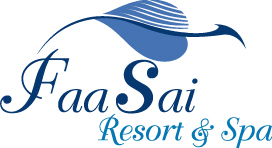Miraculous Thai herbs
04:14pm, Tuesday 4 September 2012
After Thai massage couldn't budge the hard muscle tension in my shoulders that had built up over the years, Surin, who has a diploma in traditional Thai healing therapy from Wat Po, recommended a traditional Thai treatment called luk prakob. Anything was worth a try and I watched him as he mashed up various Thai herbs together in a mortar and pestle, bound them into a cloth ball and heated the balls in a steamer. These hot herb balls (prakob) were then pressed on my skin in a series of quick moves. It reminded me of my childhood when my mother would draw out infections in my skin using hot poultices. But whereas the poultices smelt muddy and medicinal, when Surin was preparing the prakob, a most delicious scent pervaded the air; I felt as if the richness of the forest had penetrated into our inner city Bangkok apartment.
I was familiar with most of the herbs; lemongrass, kaffir limes, tamarind leaves and turmeric are all ingredients in Thai cooking. The one herb I didn't know was plai or zingiber cassumunar. Like turmeric, it is a member of the ginger family, but the root (the part which is used) is much bigger than turmeric and, whereas turmeric is a bright orange colour, plai is bright yellow. My skin was stained yellow after the treatment.
Plai is unique to Thailand and has been used in traditional Thai medicine for more hundreds of years. Its medicinal properties have been well documented by the royal physicians and plai has been the subject of more than 40 academic papers. Most commonly it is used for the relief of inflammation, so it is used to relieve problems such as muscle aches, rheumatism and arthritis and even menstrual cramps. It is also an excellent antiseptic, rivaling the famous tea tree oil of my home in New Zealand. Realising the importance of this indigenous herb, the Innovation Development Fund of Thailand collaborated with Thai universities and pharmaceutical companies to extract the active ingredients which they market under the name plaitinoids.
Drawing on his knowledge from Wat Po and various traditional Thai texts, Surin later developed a massage oil and tiger balm using plai, which has become a huge hit with everyone who tries it including our guests at the spa and my family.
As for my shoulders - they don't seem to be knotted up any more but I can't attribute this entirely to the plai. More likely it is from living in Thailand for the past 12 years where I have become much more laid back than I was in the past. The things that once used to bother me so much now seem to be forgotten.










